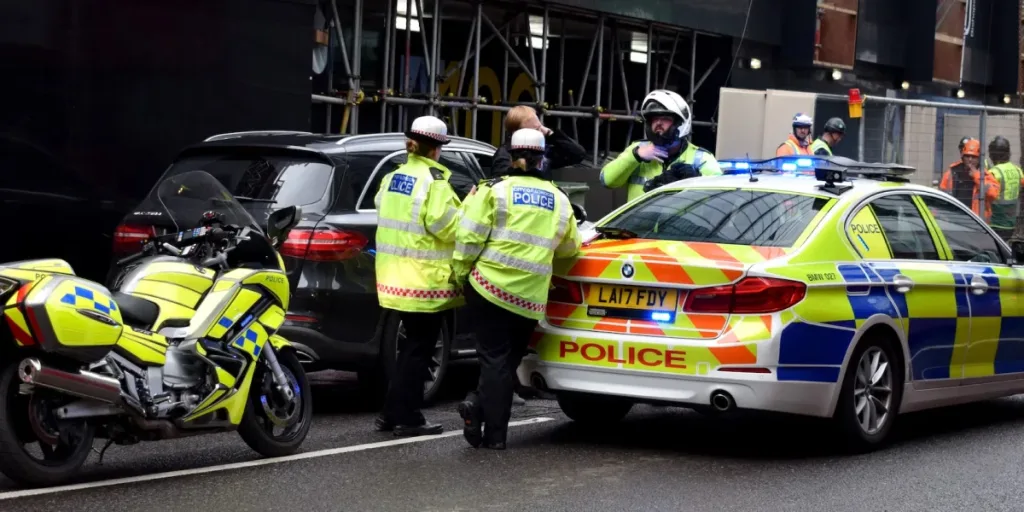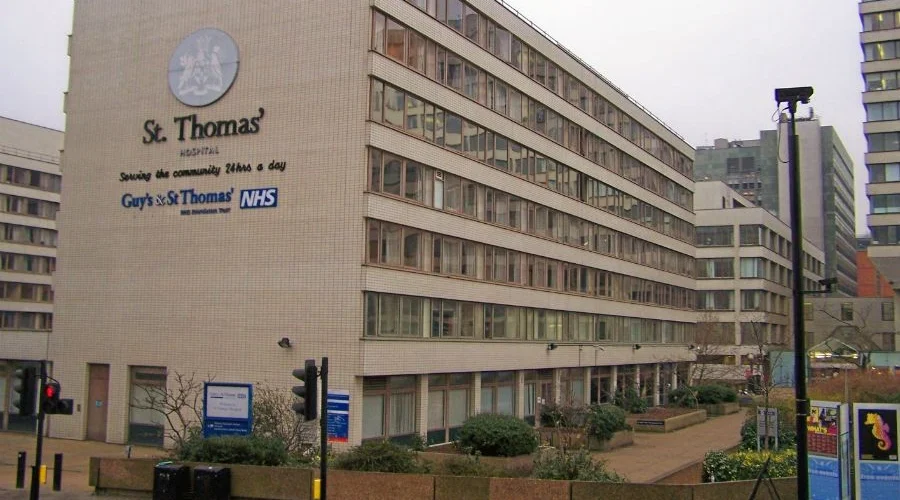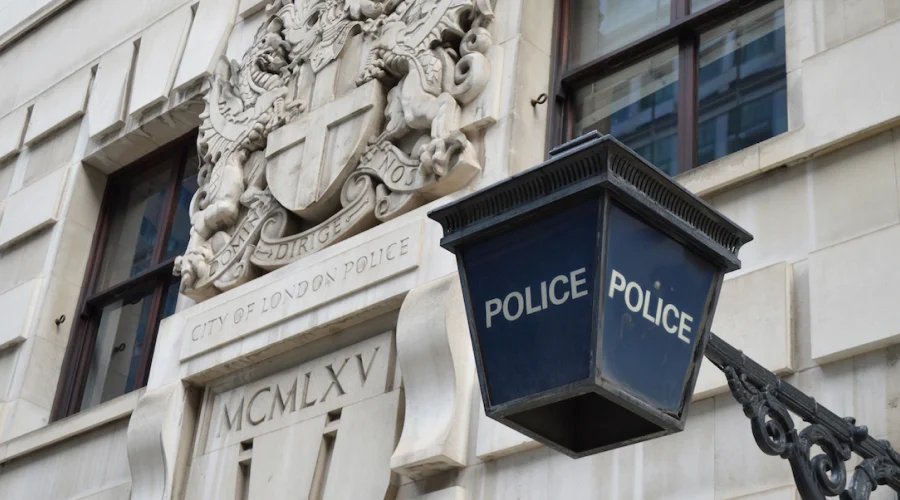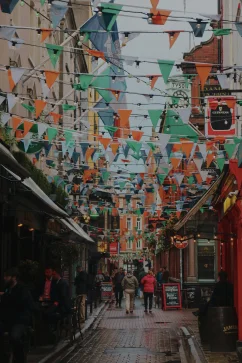Guide to Emergency Places in London: Safety and Assistance

London, as a bustling metropolis, is equipped with a comprehensive healthcare system that includes various hospitals and urgency care facilities to cater to the medical needs of its residents and visitors. This guide provides an overview of hospitals and urgency care options in London, ensuring that you have the necessary information for medical emergencies or non-life-threatening situations.
Emergency Services in London
Emergency services in London are well-organized and readily available to provide assistance during critical situations. Whether you’re a resident or a visitor, it’s crucial to know how to access these services in case of emergencies. In London, the primary emergency contact number for all critical situations is 999. When contacting emergency services, it’s essential to provide the operator with precise information about the nature of the emergency, your location, and any other relevant details. This ensures that the appropriate response is deployed swiftly. In non-urgent situations or for general healthcare advice, you can call NHS 111, a non-emergency medical helpline that can provide guidance and assistance. This number is equivalent to 911 in the United States and will connect you to the following emergency services:
- Ambulance Service: The London Ambulance Service (LAS) is responsible for responding to medical emergencies, including accidents, illnesses, and other health-related crises. When you dial 999, LAS will dispatch an ambulance to your location. Highly trained paramedics will provide immediate care and transportation to a hospital’s Accident & Emergency (A&E) department when necessary.
- Police Service: The emergency number 999 can also connect you to the police in London. Whether you’re reporting a crime, need assistance in a dangerous situation, or require police presence for any reason, the police will respond promptly.
- Fire and Rescue Service: In cases of fires, hazardous materials incidents, and rescue operations, calling 999 will summon the London Fire Brigade. Firefighters and rescue personnel are trained to respond to a wide range of emergency situations and are equipped to handle fires and other hazardous incidents.
Accident & Emergency (A&E) Departments
Accident & Emergency (A&E) departments in London are crucial components of the city’s healthcare system, providing immediate medical care to individuals in critical or life-threatening situations. A&E departments are equipped to handle a wide range of medical emergencies, including accidents, illnesses, injuries, and other acute medical conditions. Here are some notable A&E departments in London:
St Thomas’ Hospital A&E
Location: Westminster Bridge Road, London SE1 7EH
Overview: St Thomas’ Hospital is part of the Guy’s and St Thomas’ NHS Foundation Trust and houses a prominent A&E department known for its high-quality emergency care services.
The Royal London Hospital A&E
Location: Whitechapel Road, London E1 1BB
Overview: The Royal London Hospital is part of the Barts Health NHS Trust and is renowned for its trauma and emergency care services. It serves a large area in East London.
St Mary’s Hospital A&E
Location: Praed Street, London W2 1NY
Overview: St Mary’s Hospital, part of the Imperial College Healthcare NHS Trust, features a well-respected A&E department providing emergency care to patients in West London.
Chelsea and Westminster Hospital A&E
Location: 369 Fulham Road, London SW10 9NH
Overview: Chelsea and Westminster Hospital’s A&E department serves the Chelsea and Kensington areas and offers a range of emergency services.
Kings College Hospital A&E
Location: Denmark Hill, London SE5 9RS
Overview: Kings College Hospital is a major teaching hospital in London and houses an A&E department known for its trauma care and emergency services.
University College Hospital A&E
Location: 235 Euston Road, London NW1 2BU
Overview: University College Hospital’s A&E department is part of the University College London Hospitals NHS Foundation Trust and is a significant provider of emergency care in Central London.
These A&E departments are staffed with highly skilled medical professionals, including doctors, nurses, and support staff, who are trained to respond to various medical emergencies. They are equipped with state-of-the-art medical facilities and technology to ensure timely and effective care for patients in critical situations. It’s important to note that while A&E departments are designed for immediate and life-threatening emergencies, non-urgent medical issues are best addressed at walk-in clinics, general practitioner (GP) offices, or other healthcare facilities to prevent overcrowding of A&E departments.
The London Ambulance Service (LAS) is responsible for providing emergency ambulance services across the city. LAS responds to emergency calls and transports patients to appropriate healthcare facilities. In the case of a medical emergency, calling 999 will prompt an ambulance dispatch to your location.
In conclusion, London’s healthcare system is extensive and efficient, catering to various medical needs. Knowing how to access the right services, whether it’s dialing 999 for emergencies, visiting A&E departments, seeking help from walk-in clinics and pharmacies, or registering with a GP, is vital for your well-being and safety in the city. Whether you are a resident or a visitor, being well-informed and prepared ensures that you can receive the necessary medical care when required.

Police Stations in London
London, the sprawling metropolis and the capital of the United Kingdom, boasts a network of police stations strategically located throughout its various boroughs. These police stations are the frontline of law enforcement in the city, where officers work diligently to ensure the safety and security of London’s residents and visitors. In this text, we will explore some notable police stations in London, though it is important to note that there are many more police facilities across the city. London has a network of police stations to serve its diverse neighborhoods and maintain law and order. Here are some notable police stations in different areas of London:
New Scotland Yard
Address: Victoria Embankment, London SW1A 2JL
Charing Cross Police Station
Address: Agar Street, London WC2N 4JP
Westminster Police Station
Address: 71 Victoria Embankment, London SW1A 2BB
Paddington Green Police Station
Address: 17 Marylands Road, London W9 2DZ
King’s Cross Police Station
Address: 25 Gray’s Inn Road, London WC1X 8YB
Islington Police Station
Address: 2 Tolpuddle Street, London N1 0YY
Brixton Police Station
Address: 367 Brixton Road, London SW9 7DD
These police stations are part of the Metropolitan Police Service, the territorial police force responsible for policing Greater London. They play a crucial role in maintaining public safety, responding to emergencies, and providing assistance to residents and visitors. In the event of an emergency, dial 999 or 112 to reach the police or other emergency services.

Fire Stations in London
London, the bustling capital of the United Kingdom, is not only known for its iconic landmarks and diverse culture but also for its robust fire services. The city is served by numerous fire stations, strategically located to respond swiftly to emergencies and protect the lives and properties of its residents. Here you can find some of the fire stations located in the city of London. To contact them you should call the following number: +44 20 8555 1200.
London Fire Brigade Headquarters
Address: Union Street, London SE1 0LL
Paddington Fire Station
Address: Harrow Road, London W2 1RT
Soho Fire Station
Address: Poland Street, London W1F 7NB
Shoreditch Fire Station
Address: Old Street, London EC1V 9BE
Chelsea Fire Station
Address: 177 Kings Road, London SW3 5EB
Islington Fire Station
Address: 29 Upper Street, London N1 0PN
Brixton Fire Station
Address: 126 Gresham Road, London SW9 7HD
Wembley Fire Station
Address: 138-150 Harrow Road, Wembley HA9 6PL
These fire stations are part of the London Fire Brigade, which is responsible for firefighting, fire prevention, and responding to a wide range of emergencies, including rescues, hazardous materials incidents, and more. In the event of a fire or other emergencies, you should call 999 or 112 to request assistance from the fire brigade or other emergency services.
Emergency Shelters in London
London, the sprawling and diverse capital of the United Kingdom, faces the challenges of homelessness and rough sleeping, particularly in its urban areas. To address this issue and ensure the well-being of vulnerable individuals, the city provides a network of emergency shelters and services. In this text, we will explore some notable emergency shelters in London, highlighting the vital role they play in offering support and refuge to those in need.
The Connection at St Martin-in-the-Fields: The Connection at St Martin-in-the-Fields, located at 12 Adelaide Street, London WC2N 4HW, is a well-known charity organization that operates an emergency shelter for the homeless. They provide a safe place for individuals to sleep, access hot meals, and receive support to find more stable accommodation.
The Passage: The Passage, situated at St Vincent’s Centre, Carlisle Place, London SW1P 1NL, is another prominent organization in London dedicated to helping homeless individuals. They run various programs, including emergency accommodation, to support those experiencing homelessness.
Shelter from the Storm: Shelter from the Storm, found at 209 Isledon Road, London N7 7JR, is a shelter that offers refuge for people experiencing homelessness, particularly during the harsh winter months. They provide a warm, safe place to sleep and access to essential services.
Glass Door Homeless Charity: Glass Door Homeless Charity operates several church-based shelter locations across London during the winter season. They collaborate with local churches to offer a safe space for rough sleepers to spend the night and receive support.
Crisis Skylight: Crisis Skylight, situated at 66 Commercial Street, London E1 6LT, is part of the Crisis charity organization. While not a traditional emergency shelter, Crisis provides a range of services, including temporary accommodation and assistance in finding stable housing, to people experiencing homelessness.
Homeless Action in Barnet: Homeless Action in Barnet, located at 36B Woodhouse Road, North Finchley, London N12 0RG, operates a night shelter and day center for homeless individuals in the borough of Barnet. They provide support, meals, and a safe place to sleep.
Thames Reach London Street Rescue: Thames Reach is a charity organization that works to support rough sleepers and help them find safe and stable housing. They operate outreach services and emergency accommodation options across the city.
These emergency shelters and organizations represent a fraction of the network of support available in London for individuals experiencing homelessness. They play a crucial role in providing a safety net for those in need, offering not only a place to sleep but also access to meals, clothing, and assistance in finding more permanent accommodation. London’s commitment to addressing homelessness and providing emergency shelters reflects the city’s dedication to the welfare of all its residents. For more information about specific emergency shelters or the services they offer, it is advisable to contact the respective organizations or visit their official websites for comprehensive details.

Embassies and Consulates
Please note that this list is not exhaustive, as London hosts embassies and consulates from a wide range of countries. The addresses provided are for reference, and it’s advisable to verify the most up-to-date information from official sources or websites when planning to visit or contact a specific embassy or consulate.
United States Embassy
Address: 33 Nine Elms Ln, London SW11 7US, United Kingdom
Embassy of France
Address: 58 Knightsbridge, London SW1X 7JT, United Kingdom
Embassy of Germany
Address: 23 Belgrave Square, London SW1X 8PZ, United Kingdom
Russian Embassy
Address: 6/7 Kensington Palace Gardens, London W8 4QP, United Kingdom
Chinese Embassy
Address: 49-51 Portland Pl, London W1B 1JL, United Kingdom
Embassy of Japan
Address: 101-104 Piccadilly, London W1J 7JT, United Kingdom
Embassy of Italy
Address: 83-86 Finsbury Pavement, London EC2A 1PL, United Kingdom
Embassy of Spain
Address: 39 Chesham Pl, London SW1X 8SB, United Kingdom
Embassy of India
Address: India House, Aldwych, London WC2B 4NA, United Kingdom
Australian High Commission
Address: Australia House, Strand, London WC2B 4LA, United Kingdom
Canadian High Commission
Address: Canada House, Trafalgar Square, London SW1Y 5BJ, United Kingdom
South African High Commission
Address: South Africa House, Trafalgar Square, London WC2N 5DP, United Kingdom
Brazilian Embassy
Address: 14-16 Cockspur St, London SW1Y 5BL, United Kingdom
Embassy of the Republic of Korea (South Korea)
Address: 60 Buckingham Gate, London SW1E 6AJ, United Kingdom
Embassy of the Republic of Turkey
Address: 43 Belgrave Square, London SW1X 8PA, United Kingdom
Embassy of the Netherlands
Address: 38 Hyde Park Gate, London SW7 5DP, United Kingdom
Swedish Embassy
Address: 11 Montagu Pl, London W1H 2AL, United Kingdom
Mexican Embassy
Address: 16 St George St, London W1S 1FD, United Kingdom
Royal Norwegian Embassy
Address: 25 Belgrave Square, London SW1X 8QD, United Kingdom
Embassy of Greece
Address: 1A Holland Park, London W11 3TP, United Kingdom
Emergency Alerts
Emergency alerts in London are crucial for keeping residents and visitors informed and safe in various critical situations. These alerts are typically disseminated through multiple channels to ensure widespread awareness and appropriate responses to emergencies. Here is an overview of emergency alerts in London:
Types of Emergency Alerts
- Weather Warnings: The UK’s Meteorological Office issues weather warnings for severe conditions, including heavy rain, flooding, storms, snow, and extreme temperatures. These alerts help people prepare for adverse weather events and take necessary precautions.
- Public Health Alerts: The National Health Service (NHS) and public health agencies issue alerts related to health emergencies, such as disease outbreaks or vaccination campaigns. During the COVID-19 pandemic, for example, alerts were issued to convey important information about the virus and vaccination rollout.
- Security Alerts: In the event of security threats, law enforcement agencies and the government may issue alerts to inform the public about potential risks and provide guidance on how to stay safe. This can include alerts related to terrorism or civil unrest.
- Transportation Alerts: Transport for London (TfL) and other relevant authorities issue alerts regarding disruptions in public transportation, road closures, accidents, or other incidents that may affect travel within the city.
- Environmental Alerts: Alerts related to environmental hazards, such as air quality, pollution, and chemical spills, may be issued by environmental agencies to safeguard public health.
Channels for Receiving Emergency Alerts
- Mobile Phones: Wireless Emergency Alerts (WEA) are used to send critical alerts to mobile phones in specific geographic areas. Users receive these alerts as text messages with information about the emergency and recommended actions.
- Emergency Alert Systems (EAS): EAS is a national public warning system that enables broadcasters, cable television systems, and other media outlets to provide emergency alerts. This system may interrupt regular programming to convey urgent information.
- Social Media: Emergency alerts are often shared through official social media channels of relevant authorities, including the Metropolitan Police, Transport for London, and the Mayor’s Office, among others.
- Websites and Apps: Local government websites, emergency services, and official apps provide real-time updates and information during emergencies.
- Radio and Television: Traditional media outlets play a vital role in broadcasting emergency alerts, including severe weather warnings, security advisories, and public health announcements.
- Sirens and Public Address Systems: In some cases, sirens and public address systems notify people in specific areas, especially for severe weather events and civil emergencies.
- Email and Text Alerts: People can sign up to receive email and text alerts from local authorities and emergency services, ensuring they receive important information directly in their inboxes.
In summary, emergency alerts in London are a vital component of the city’s emergency management and public safety efforts. They serve to keep the public informed, prepared, and safe in the face of various potential threats and hazards. Staying informed and heeding the instructions provided in these alerts is crucial for personal safety and the well-being of the community.

Conclusion
London’s emergency services form a comprehensive and highly organized network dedicated to ensuring the safety and well-being of its residents and visitors. This multifaceted system comprises various agencies and organizations that collaborate to address a wide range of emergencies, from medical crises and fires to law enforcement and public safety. The critical components of emergency services in London are the Metropolitan Police Service (MPS), the London Fire Brigade (LFB), and the London Ambulance Service (LAS), each playing a unique and indispensable role in safeguarding the city.








